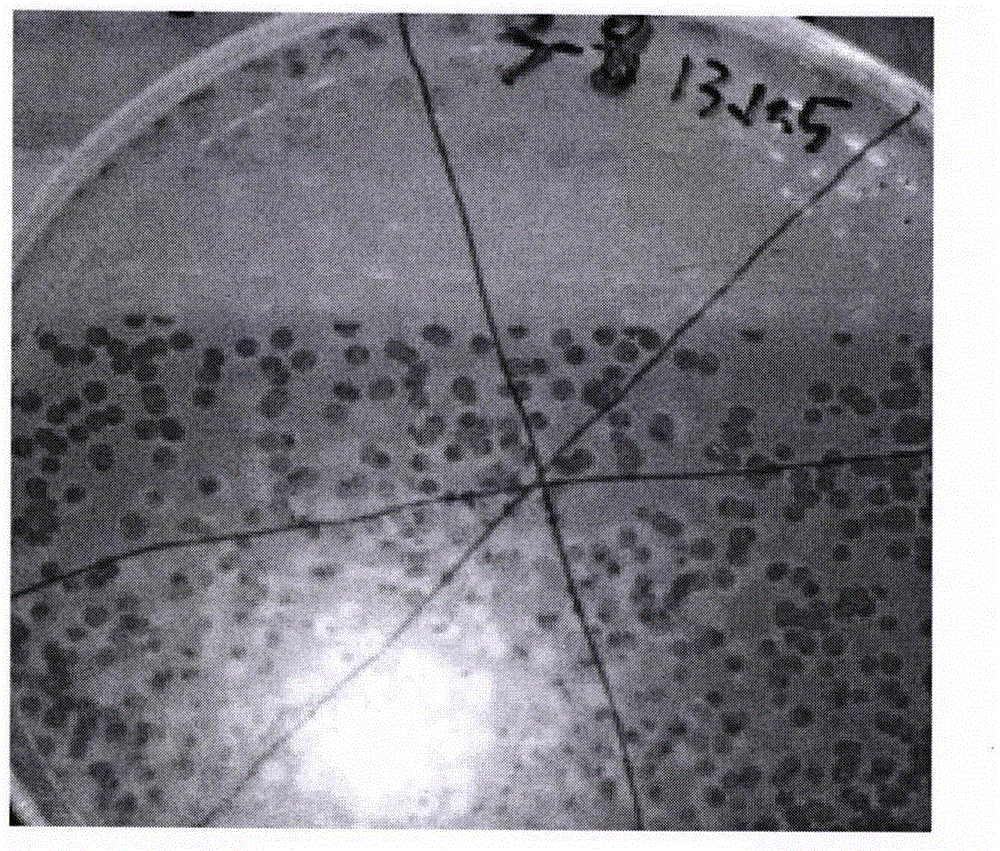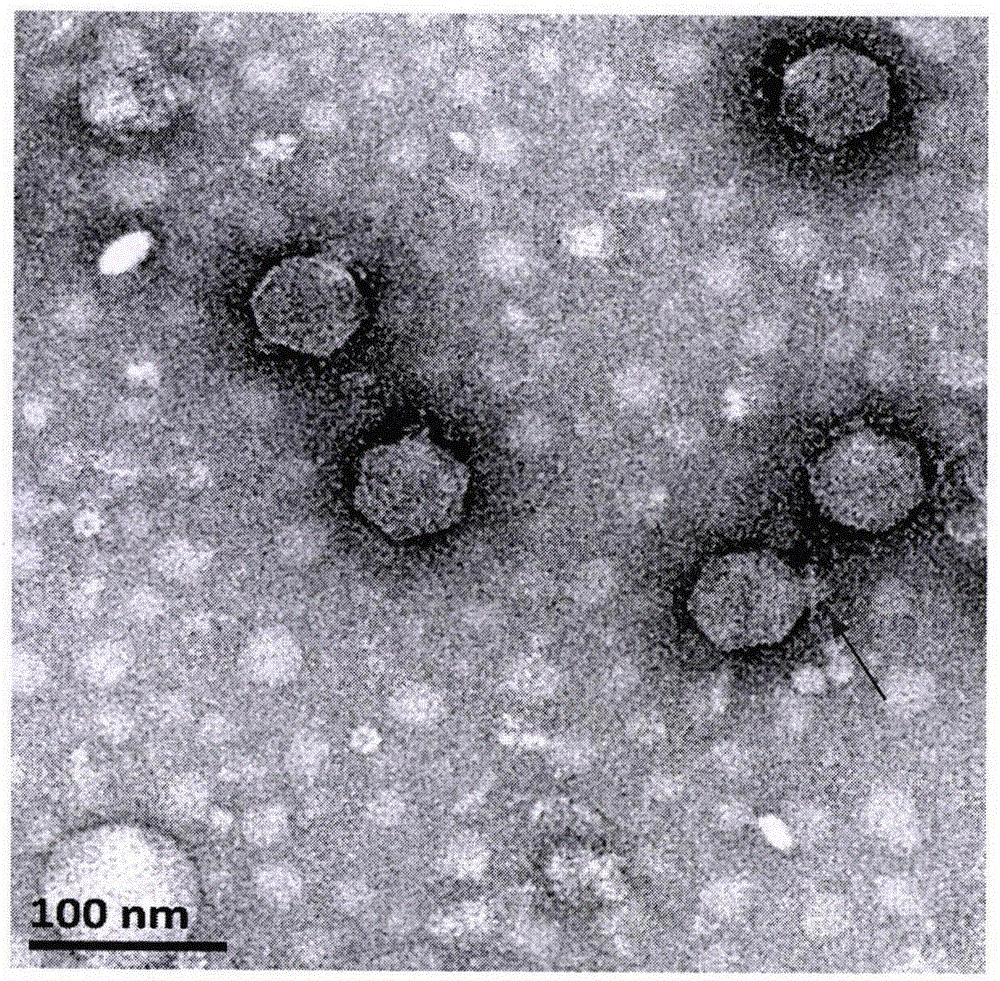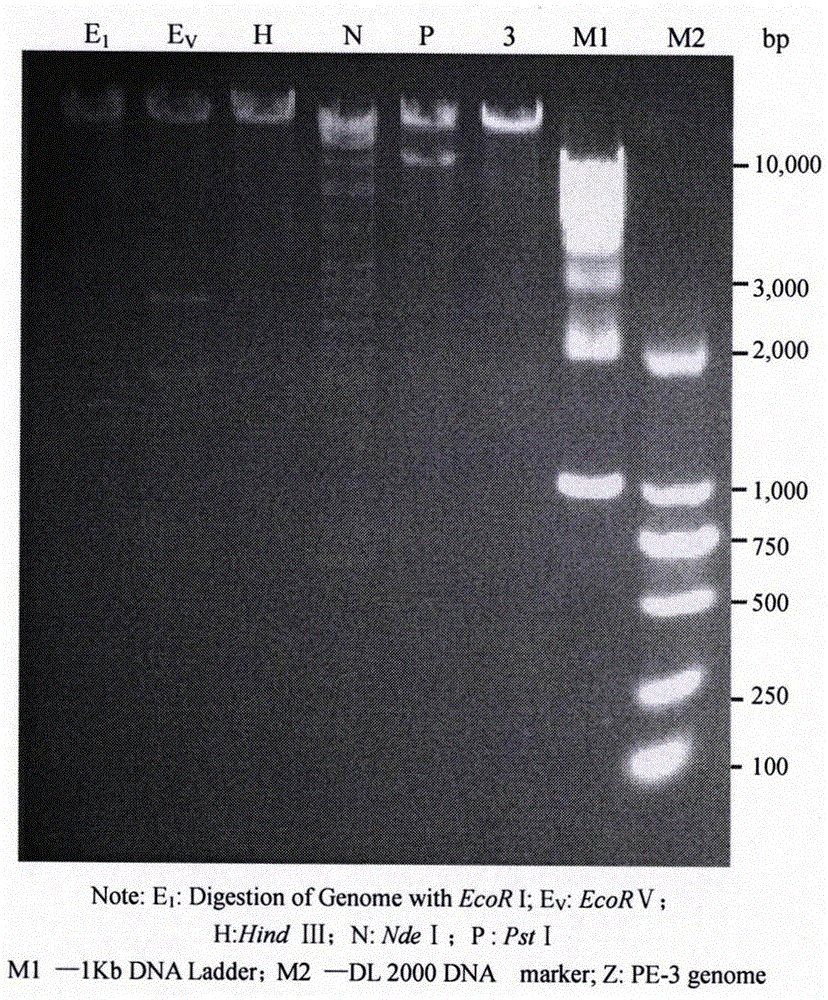Separation and identification of a strain of novel Enterohemorrhagic Escherichia coli O157 phage PE-3 in sewage treatment system
A sewage treatment system, enterohemorrhagic technology, applied in the field of bioengineering, to achieve rapid and efficient cracking effect, pollution prevention, good physical and chemical resistance
- Summary
- Abstract
- Description
- Claims
- Application Information
AI Technical Summary
Problems solved by technology
Method used
Image
Examples
Embodiment 1
[0026] Embodiment 1, the separation and purification of phage
[0027] The sewage sample used in the test of the present invention was collected in January 2013 as a water sample for separating bacteriophage in the aeration tank of a certain urban sewage treatment plant in Beijing.
[0028] Take 500mL of sewage sample, add solid CaCl 2 To a final concentration of 1mmol / L, centrifuge at 3000g for 10min to remove large impurities, and then filter to sterilize with a 0.22μm microporous membrane. Take 300ml of filtrate, 300mL of 2×LB culture medium and 15mL of host bacterial suspension and put them into a high-pressure sterilized Erlenmeyer flask. After 10 hours of shaking culture at 37°C and 120rpm, centrifuge at 3000g for 10min at 4°C, and take 100mL of supernatant. Add 100mL of 2×LB culture medium and 5mL of the corresponding host bacterial suspension, place on a shaker at 37°C at 120rpm for 12h, then centrifuge at 5000g for 10min at 4°C, and then filter the supernatant throug...
Embodiment 2
[0035] Embodiment 2, the morphological observation of bacteriophage
[0036] Take 20 μL of the phage suspension and drop it on the copper grid, wait for its natural precipitation for 10 minutes, blot it dry from the side with dry filter paper, let it air for about 1 minute, add 1 drop of 1% uranyl acetate on the copper grid, stain for 2 minutes, and then use it carefully to dry Blot the excess dye from the side of the filter paper, let it dry naturally in the dark for 30 minutes, and observe it with a transmission electron microscope (JEM-1400).
[0037] The result is as figure 2 As shown in electron microscope photos, the head of bacteriophage PE-3 presents a regular hexahedral symmetry, the diameter of the head is about 50nm, the tail is short, and the length and width are about 12nm. According to the eighth virus classification of the International Organization for Taxonomy of Viruses (ICTV) According to the report, the EHE coli O157 phage PE-3 can be preliminarily classi...
Embodiment 3
[0038] Example 3, phage genome analysis and identification
[0039] Enzyme digestion identification of phage genome: add DNaseI and RNaseA to the purified phage suspension, incubate at 37°C for 30 minutes, add proteinase K and SDS, mix well, put in a water bath at 56°C overnight, add NaCl solution to the digestion solution, mix well, Add an equal volume of phenol: chloroform: isoamyl alcohol (25:24:1), repeat the extraction twice, collect the hydrophilic phase, and use absolute ethanol to precipitate the nucleic acid. The resulting nucleic acid precipitate is washed with 70% ethanol and then suspended in TE , stored at -20°C for later use. Respectively use restriction endonucleases EcoR I, EcoR V, Hind III, Nde I, Pst I to identify the type of phage nucleic acid, and the digested products are analyzed by electrophoresis in 1% agarose gel at a voltage of 90V for 90min .
[0040] Digestion results such as image 3 shown. After the phage PE-3 genome was treated with EcoR V re...
PUM
| Property | Measurement | Unit |
|---|---|---|
| Potency | aaaaa | aaaaa |
| Potency | aaaaa | aaaaa |
Abstract
Description
Claims
Application Information
 Login to View More
Login to View More - R&D
- Intellectual Property
- Life Sciences
- Materials
- Tech Scout
- Unparalleled Data Quality
- Higher Quality Content
- 60% Fewer Hallucinations
Browse by: Latest US Patents, China's latest patents, Technical Efficacy Thesaurus, Application Domain, Technology Topic, Popular Technical Reports.
© 2025 PatSnap. All rights reserved.Legal|Privacy policy|Modern Slavery Act Transparency Statement|Sitemap|About US| Contact US: help@patsnap.com



